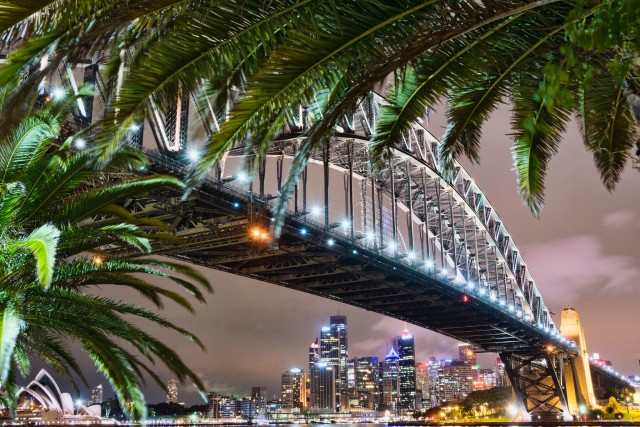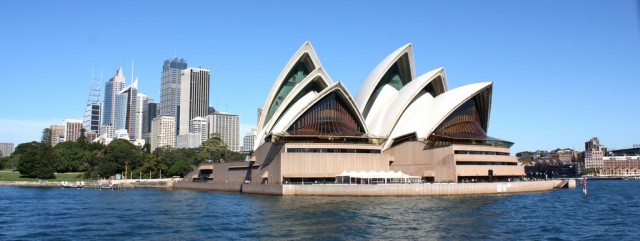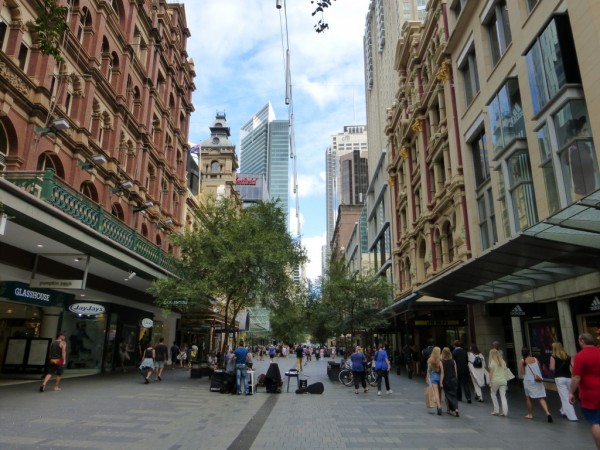 the Travel Enthusiast
the Travel Enthusiast
- 07 Apr
Adam in Amazing Places | NO COMMENTSSydney’s Charm
The biggest port of Australia was established by British deportees
It was the most unusual load that Admiral Arthur Phillips ever transported. The commander of 11 ships started his journey of 7 months from England to the eastern coast of Australia, having over 700 British convicts for deportation and over 450 marines.
On 18 January 1788 the ships touched the ground described by other navigators as good for landing. At this point the exhausted prisoners – at least those who survived the voyage – could finally leave the ships.
The new colonists found fertile coast regions, apparently uninhabited, with large gulfs. The ships that unloaded the deported remained for a while anchored at a natural port, Botany bay. Some convicts built settlements on a rocky land, which was also quite high was also known as The Rocks. Here started the colonization of Australia by Europeans and also the history of Sydney’s port, eventually built here.
If you approach from the the ocean, the first thing you observe is the high horizon and massive skyscrapers. Modern Sydney is a universal city, with a population of approximately 4 million people, with streets like New York and with a natural port filled with life and beauty.
In contrast with its noisy center of the city, in its green suburbs, with 10.000 of bungalows, gardens and swimming pools, you can find a relaxing and quite atmosphere.
Sydney Opera House
The emblem of the biggest Australian city is the Opera, with its unique form, resembling a giant shell, built on a promontory most parts of which enter on the edge of the port. In 1957, Danish Architect Jorn Utzon, who won a contest for a theatrical lyric with an Avant Garde project who had the original sketch of the building.
The project was extremely expensive and so difficult to realize it from technical point of view that the Danish retired from his post as architect.
However, Australian architects solved all the problems, although the construction cost 102 million dollars and the construction took 14 years instead of 5.
It is worth going with the elevator up to the top of Sydney Tower, from where not only you can see the whole city with its gulfs but also if the weather is good. You can see the whole Pacific coasts and the Blue Mountains.
Underneath the tower, the numerous pedestrians gather at the commercial center of Pitt Street, a street filled with magazines which are covered and protected from the scorching sun. The Monorail, a modern tram, slips through the city center without a single noise.
- Flights
- Hotels
- Packages
- Cars
- Cruises
travel search by Travelgrove (get this widget)The port’s bridge “Sydney Harbour Bridge”, made from steel and having the nickname “the coat hanger”. Many cars are passing through the bridge without a problem. It was finished in 1932. It is a highly developed bridge, having 8 bands, 2 tram rails, pedestrian sidewalks and bike roads. It was the symbol of the city until the construction of the Sydney Opera House.
It is Better on Water
A good part of the city’s traffic is probably on water. Buckles and ferryboats are crossing through the bays and lands. The principal harbor of the city is Circular Quay, where so many people give a vibrant atmosphere for the city. It is a popular meeting point for both tourists and locals. Nearby, the copy of Bounty Vessel, is disposable for visitors.
From Circular Quay, couple of minutes on foot, you arrive to The Rocks, the very first settlement of British deportees from 1788. For the 200 year anniversary of the city, the authorities rebuilt the old houses of the former settlement, as a tourist attraction, having a bar and souvenir shop. Among them lies the oldest house of Sydney called “Cadman’s Cottage” which was finished in 1816.
A bit further, at Botany Bay, a monument is situated commemorating the navigator, James Cook, the person who first set foot on Australian soil in 1770. He gained possession of the entire east coast . Cook anchored in the same bay where Captain Philip and his fleet left their first colonists.



